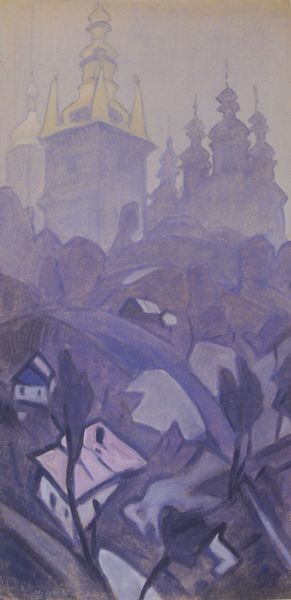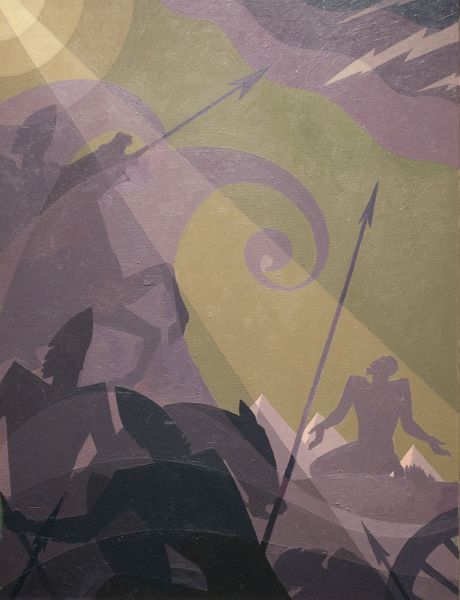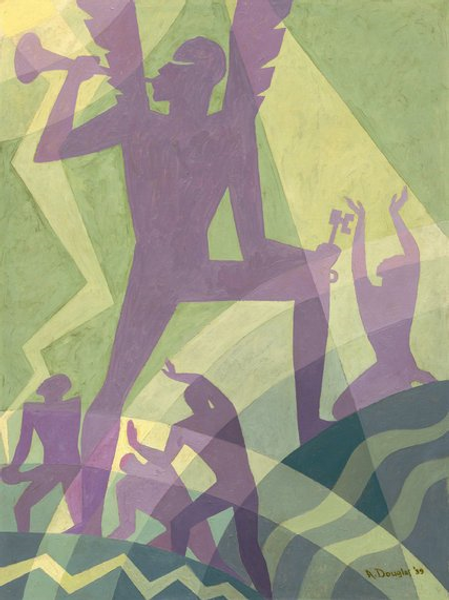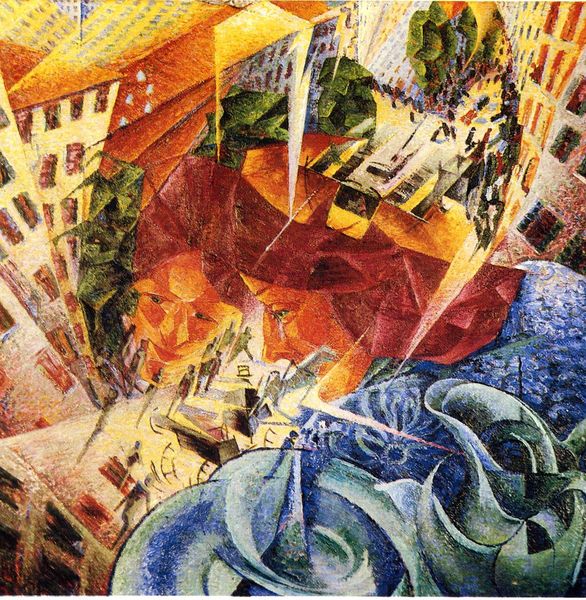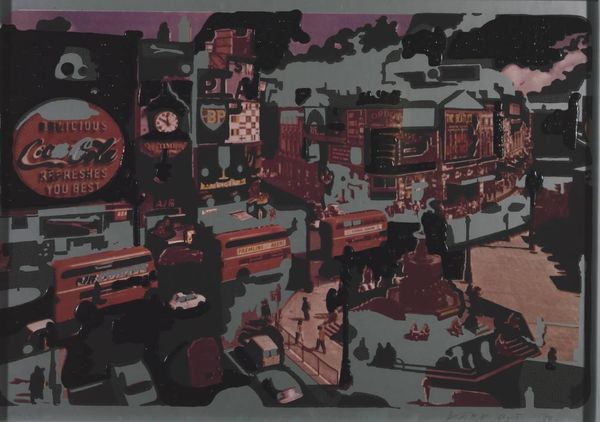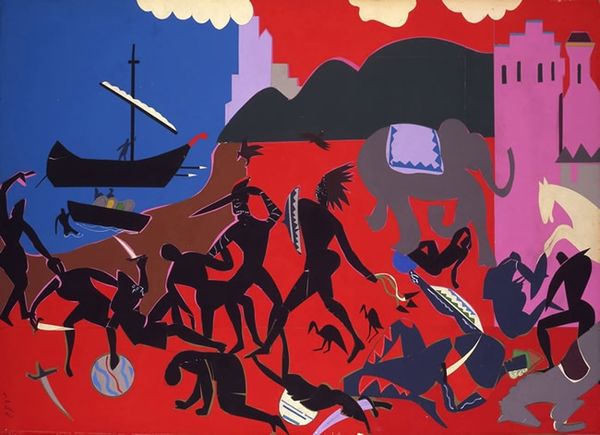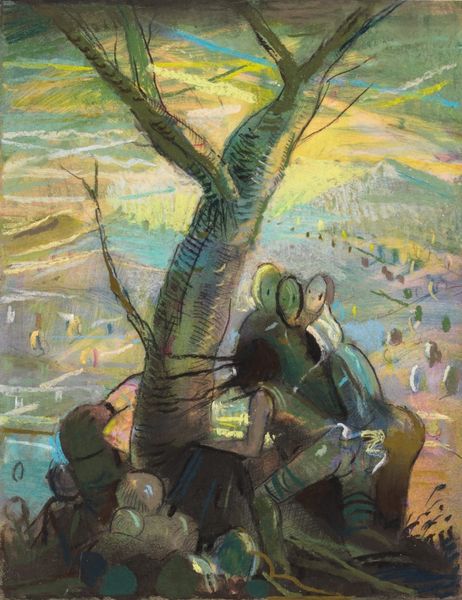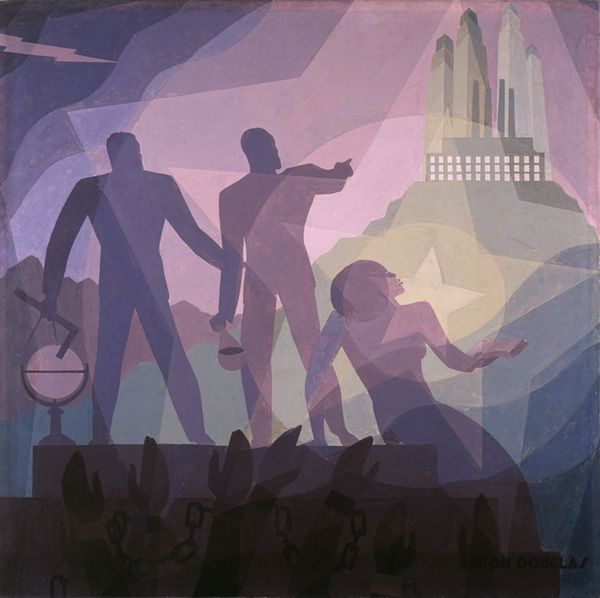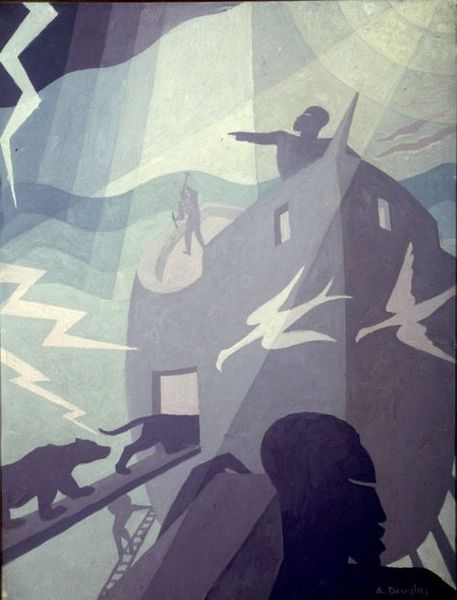
painting, acrylic-paint, ink, mural
#
abstract painting
#
painting
#
harlem-renaissance
#
acrylic-paint
#
figuration
#
mural art
#
ink
#
painting art
#
history-painting
#
mural
Dimensions: 137 x 102 cm
Copyright: Aaron Douglas,Fair Use
Editor: So, this is Aaron Douglas’s "Building More Stately Mansions," painted in 1944. It's got such a strong sense of layering and shadow. How do you interpret this work, with all its historical and architectural imagery? Curator: The layering is key, isn't it? Douglas presents us with a palimpsest of civilization. Observe the superimposition of Egyptian, Greco-Roman, and modern American architectural motifs. These aren’t merely buildings; they are visual signifiers of cultural power, artistic achievement, and societal evolution—or, perhaps, its cyclical nature. Editor: A palimpsest… I like that. So it’s like history being rewritten, but traces of the old always show through? Curator: Precisely. Note how Douglas employs silhouettes of laborers building upon and around these monuments. Their postures—some kneeling, others wielding tools—evoke both reverence for the past and active participation in shaping the future. Consider the emotional resonance of each of these symbols – what is being built and at what cost? What stories are these shapes telling? Editor: That’s really interesting. The people seem almost like ghosts, or shadows of those who came before. Curator: And doesn't that speak to cultural memory itself? The past isn't dead; it’s living within us, informing our present actions. What about the color palette – does that tell you anything? Editor: It's almost entirely shades of red and purple, some pastel, some stronger. Almost like sunset hues that may point to closure, but also point to a new dawn in history. Curator: An astute observation! That tonal range reinforces the idea of transformation and enduring legacy. Douglas presents the idea that symbols themselves morph, adapting over epochs. The mansons aren't just houses but metaphors for the architecture of social transformation Editor: I see it differently now. I was just seeing architectural references, but there is also so much emotional nuance rooted in cultural progress, tradition, and memory that connects each of us together!
Comments
No comments
Be the first to comment and join the conversation on the ultimate creative platform.
